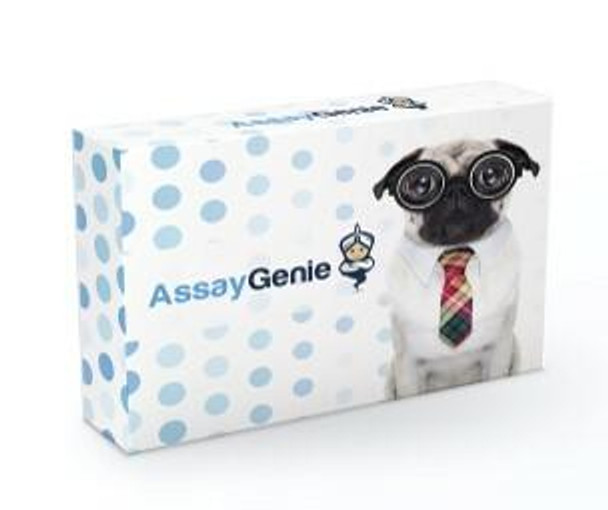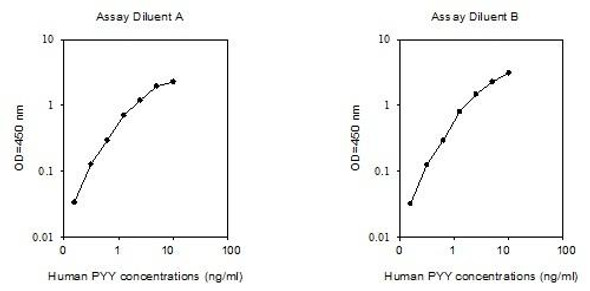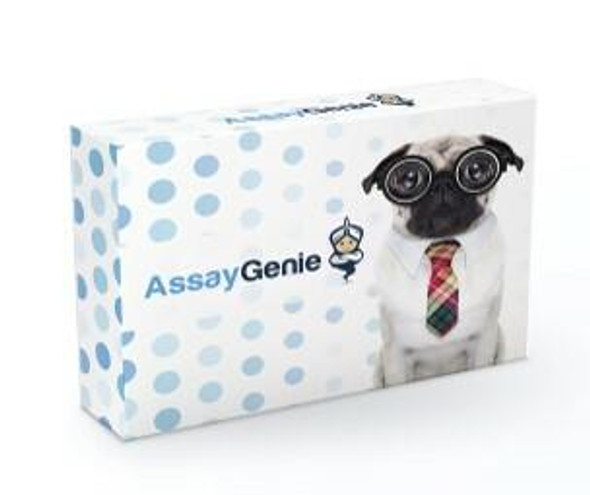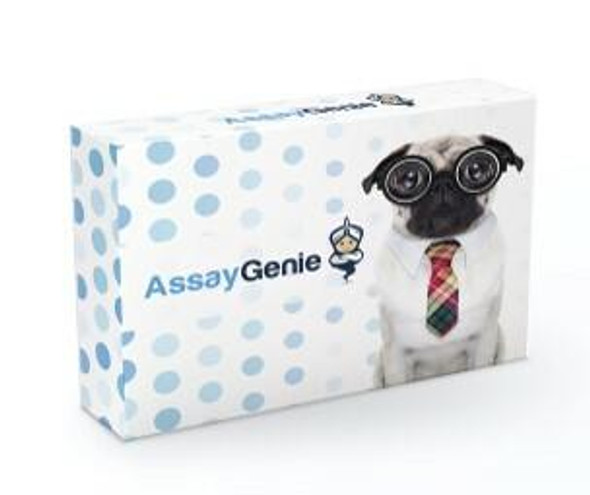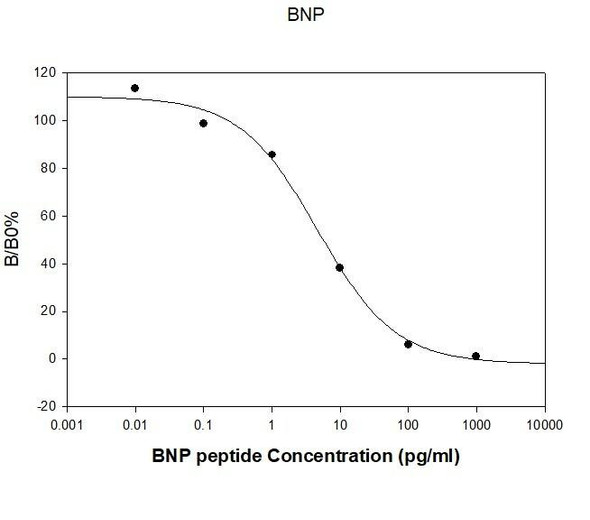Mouse PYY PharmaGenie ELISA Kit (SBRS0077)
- SKU:
- SBRS0077
- Product Type:
- ELISA Kit
- Reactivity:
- Mouse
- Applications:
- ELISA
- ELISA Type:
- Competitive
Description
Mouse PYY PharmaGenie ELISA Kit (SBRS0077)
| Product SKU: | SBRS0077 |
| Size: | 96T |
| Application: | Cross Reactivity: This ELISA kit shows no cross-reactivity with any of the cytokines tested: Ghrelin, Nesfatin, Angiotensin II, NPY and APC.This kit detects the 1-36 form PYY. |
| Uniprot: | Q9EPS2 |
| Gene ID: | 217212 |
| Gene Names: | PYY |
| Synonyms: | Peptide YY (PYY) (PYY-I) (Peptide tyrosine tyrosine) |
| Target Species: | Human, Mouse, Rat |
| Compatible Sample Types: | Cell Culture Supernatants, Serum |
| Design Principle: | Competition-based |
| Method of Detection: | Colorimetric |
| Quantitative/Semi-Quantitative: | Quantitative |
| Range: | 0.1-1,000 pg/ml |
| Sensitivity: | 5.6 pg/ml |
| Recommended Dilution: | Human: 2x, Mouse: 2x, Rat: 2x |
| Storage/Stability: | Standard, biotinylated peptide, and positive control should be stored at -20°C after arrival. Avoid multiple freeze-thaws. The remaining kit components may be stored at 4°C. Opened microplate wells and antibody (Item N) may be stored for up to 1 month at 2 to 8°C. Return unused wells to the pouch containing desiccant pack and reseal along entire edge. |
- Pre-Coated 96-well Strip Microplate
- Wash Buffer
- Standard Peptide
- Assay Diluent(s)
- Biotinylated Peptide
- HRP-Streptavidin
- TMB One-Step Substrate
- Stop Solution
- Assay Diagram
- Positive Control Sample
- Capture Antibody
- Technical Manual
Other materials and equipment required:
The Assay Genie Mouse PYY PharmaGenie ELISA Kit (SBRS0077) will require other equipment and materials to carry out the assay. Please see list below for further details.
- Distilled or deionized water
- Precision pipettes to deliver 2 ul to 1 ml volumes
- Adjustable 1-25 ml pipettes for reagent preparation
- 100 ml and 1 liter graduated cylinders
- Tubes to prepare standard and sample dilutions
- Orbital shaker
- Aluminum foil
- Saran Wrap
- Absorbent paper
- Microplate reader capable of measuring absorbance at 450nm
- SigmaPlot software (or other software that can perform four-parameter logistic regression models)
- Prepare all reagents, samples and standards as instructed.
- Add 100 ul detection antibody to each well.
- Incubate 1.5 h at RT or O/N at 4°C.
- Add 100 ul standard or sample to each well.
- Incubate 2.5 h at RT.
- Add 100 ul prepared streptavidin solution.
- Incubate 45 min at RT.
- Add 100 ul TMB One-Step Substrate Reagent to each well.
- Incubate 30 min at RT.
- Add 50 ul Stop Solution to each well.
- Read plate at 450 nm immediately.
Peptide YY is a 36 amino acid peptide released by cells in the ileum and colon in response to feeding. It is also known as PYY, Peptide Tyrosine Tyrosine, or Pancreatic Peptide YY3-36. There are two major forms of Peptide YY: PYY1-36 and PYY3-36 which is the most common form of circulating PYY. Peptide YY3-36 (PYY) is a linear polypeptide consisting of 36 amino acids with structural homology to NPY and pancreatic polypeptide. Circulating PYY concentration increases postprandially and decreases by fasting. PYY exerts its action through NPY receptors, inhibits gastric motility and increases water and electrolyte absorption in the colon. PYY may also suppress pancreatic secretion. It is secreted by the neuroendocrine cells in the ileum and colon in response to a meal, and has been shown to reduce appetite. PYY works by slowing the gastric emptying; hence, it increases efficiency of digestion and nutrient absorption after meal. PYY has been shown to play an important role in obesity. Animal studies have shown that acute peripheral administration of PYY3-36 inhibits feeding of rodents and primates. Studies on Y2R-knockout mice have revealed that there is no anorectic effect on Y2R-knockot mice (Y2R is the receptor for PYY). These findings indicate that PYY3-36 has anorectic effect which is suggested to be mediated by Y2R. Studies on PYY-knockout mice have shown that they have higher fat mass and lower glucose tolerance when compared to control mice, indicating that PYY also plays very important role in energy homeostasis by balancing the food intake. Studies have also shown that obese people secrete less PYY than non-obese people. The anorectic effect of PYY represents a possible anti-obesity therapy in the future.

